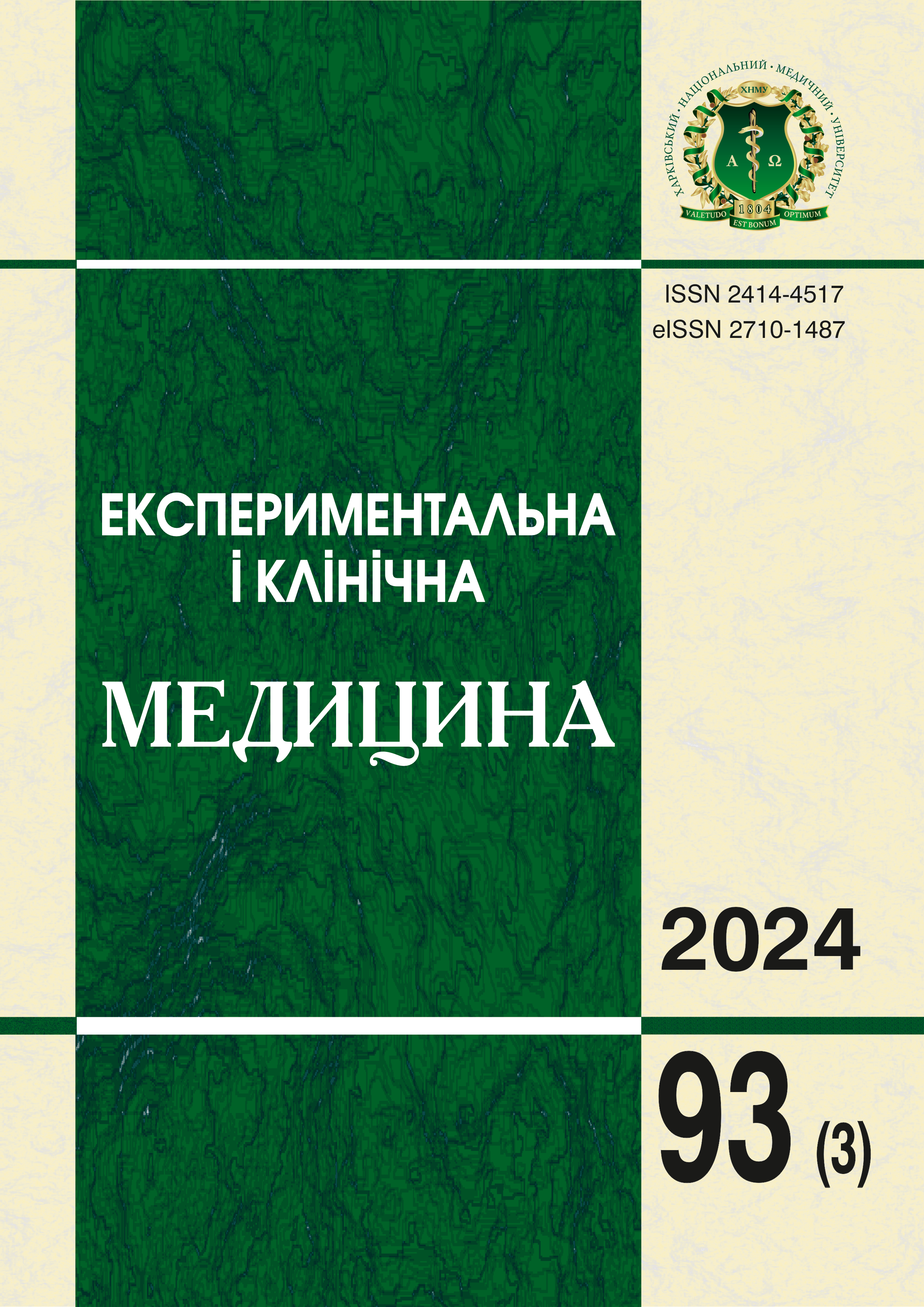Abstract
An inflammatory response following aneurysmal SubArachnoid Hemorrhage (aSAH) plays a significant role in the development of cerebral vasospasm. This study analyzes the correlation between the level of InterLeukin-6 (IL-6) in CerebroSpinal Fluid (CSF) after aSAH and the occurrence of cerebral vasospasm. We analyzed clinical manifestations, laboratory data, and instrumental examination methods in 45 patients who were treated for intracranial aSAH within 21 days, studying the relationship between the development of cerebral angiospasm and the concentration of the inflammatory factor. We found the potential significance of IL-6 in predicting vasospasm, confirmed by cerebral angiography. As a control, we analyzed the CSF samples of 15 patients treated for unruptured cerebral aneurysms. According to the study results, vasospasm developed in 44% of patients, on average on the 6th day from the onset of the disease. Patients with aSAH demonstrated statistically significant (p<0.05) higher mean IL-6 values in CSF on the 3rd, 7th, and 10th days compared to the control group. Patients with vasospasm showed statistically significant (p<0.05) higher mean IL-6 values in CSF on the 3rd day, while the differences on the 7th and 10th days (p<0.05) were not statistically significant. The threshold value for predicting the formation of cerebral vasospasm was determined to be 325 pg/ml on the 3rd day from the onset of the disease. We concluded that IL-6 in cerebrospinal fluid is a potential early marker for predicting vascular spasm after subarachnoid hemorrhage on the 3rd day of the disease, before the onset of clinical manifestations. We concluded that monitoring the value of IL-6 in the cerebrospinal fluid on the third day after aneurysm rupture is potentially significant for the early diagnosis of vasospasm.
Keywords: intracranial aneurysm, vasospasm, stroke, cytokines.
Archived: https://doi.org/10.5281/zenodo.14609286
References
Neifert SN, Chapman EK, Martini ML, Shuman WH, Schupper AJ, Oermann EK, et al. Aneurysmal Subarachnoid Hemorrhage: the Last Decade. Transl Stroke Res. 2021;12(3):428-46. DOI: 10.1007/s12975-020-00867-0. PMID: 33078345.
Chou SH. Subarachnoid Hemorrhage. Continuum (Minneap Minn). 2021; 1;27(5):1201-45. DOI: 10.1212/CON.0000000000001052. PMID: 34618758.
Romenskaya T, Longhitano Y, Piccolella F, Berger JM, Artico M, Taurone S, et al. Cerebral Vasospasm: Practical Review of Diagnosis and Management. Rev Recent Clin Trials. 2023;18(1):12-8. DOI: 10.2174/1574887117666220810121048. PMID: 35950252.
Rosen DS, Macdonald RL. Subarachnoid hemorrhage grading scales: a systematic review. Neurocrit Care. 2005;2(2):110-8. DOI: 10.1385/NCC:2:2:110. PMID: 16159052.
Dumont AS, Dumont RJ, Chow MM, Lin CL, Calisaneller T, Ley KF, Kassell NF, Lee KS. Cerebral vasospasm after subarachnoid hemorrhage: putative role of inflammation. Neurosurgery. 2003;53(1):123-33; discussion 133-5. DOI: 10.1227/01.neu.0000068863.37133.9e. PMID: 12823881.
Frontera JA, Claassen J, Schmidt JM, Wartenberg KE, Temes R,Connolly ES Jr, et al. Prediction of symptomatic vasospasm after subarachnoid hemorrhage: the modified fisher scale. Neurosurgery 2006;59(1):21-7; discussion 21-7. DOI: 10.1227/01.neu.0000243277.86222.6c. PMID: 16823296.
Jin J, Duan J, Du L, Xing W, Peng X, Zhao Q. Inflammation and immune cell abnormalities in intracranial aneurysm subarachnoid hemorrhage (SAH): Relevant signaling pathways and therapeutic strategies. Front Immunol. 2022;13:1027756. DOI: 10.3389/fimmu.2022.1027756. PMID: 36505409.
Ji C, Chen G. Signaling Pathway in Early Brain Injury after Subarachnoid Hemorrhage: News Update. Acta Neurochir Suppl. 2016;121:123-6. DOI: 10.1007/978-3-319-18497-5_21. PMID: 26463934.
Dodd WS, Laurent D, Dumont AS, Hasan DM, Jabbour PM, Starke RM, et al. Pathophysiology of Delayed Cerebral Ischemia After Subarachnoid Hemorrhage: A Review. J Am Heart Assoc. 2021;10(15):e021845. DOI: 10.1161/JAHA.121.021845. PMID: 34325514.
Pradilla G, Chaichana KL, Hoang S, Huang J, Tamargo RJ. Inflammation and cerebral vasospasm after subarachnoid hemorrhage. Neurosurg Clin N Am. 2010;21(2):365-79. DOI: 10.1016/j.nec.2009.10.008. PMID: 20380976.
Monsour M, Croci DM, Gruter BE, Taussky P, Marbacher S, Agazzi S. Cerebral Aneurysm and Interleukin-6: a Key Player in Aneurysm Generation and Rupture or Just One of the Multiple Factors? Transl Stroke Res. 2023;14(5):631-39. DOI: 10.1007/s12975-022-01079-4. PMID: 36042111.
Dengler J, Schefold JC, Graetz D, Meisel C, Splettstosser G, Volk HD, Schlosser HG. Point-of-care testing for interleukin-6 in cerebro spinal fluid (CSF) after subarachnoid haemorrhage. Med Sci Monit. 2008;14:BR265-8. PMID: 19043359.
Croci DM, Sivanrupan S, Wanderer S, Agnoletto GJ, Chiappini A, Gruter BE, et al. Preclinical and clinical role of interleukin-6 in the development of delayed cerebral vasospasm and neuronal cell death after subarachnoid hemorrhage: towards a potential target therapy? Neurosurg Rev. 2022;45(1):395-403. DOI: 10.1007/s10143-021-01628-9. PMID: 34448990.
Ikram A, Javaid MA, Ortega-Gutierrez S, Selim M, Kelangi S, Anwar SMH, et al. Delayed Cerebral Ischemia after Subarachnoid Hemorrhage. J Stroke Cerebrovasc Dis. 2021;30(11):106064. DOI: 10.1016/j.jstrokecerebrovasdis.2021.106064. PMID: 34464924.
Kaliuzhka V, Tkachenko A, Myasoedov V, Markevych M, Onishchenko A, Babalyan I, Piatykop V. The Prognostic Value of Eryptosis Parameters in the Cerebrospinal Fluid for Cerebral Vasospasm and Delayed Cerebral Ischemia Formation. World Neurosurg. 2023;173:e578-85. DOI: 10.1016/j.wneu.2023.02.096. PMID: 36842532.
Wang L, Geng G, Zhu T, Chen W, Li X, Gu J, Jiang E. Progress in Research on TLR4-Mediated Inflammatory Response Mechanisms in Brain Injury after Subarachnoid Hemorrhage. Cells. 2022;11(23):3781. DOI: 10.3390/cells11233781. PMID: 36497041.
van der Steen WE, Leemans EL, van den Berg R, Roos YBWEM, Marquering HA, Verbaan D, Majoie CBLM. Radiological scales predicting delayed cerebral ischemia in subarachnoid hemorrhage: systematic review and meta-analysis. Neuroradiology. 2019;61(3):247-56. DOI: 10.1007/s00234-019-02161-9. PMID: 30693409.
Simon M, Grote A. Interleukin 6 and Aneurysmal Subarachnoid Hemorrhage. A Narrative Review. Int J Mol Sci. 2021;22(8):4133. DOI: 10.3390/ijms22084133. PMID: 33923626.
Lucke-Wold B, Dodd W, Motwani K, Hosaka K, Laurent D, Martinez M, et al. Investigation and modulation of interleukin-6 following subarachnoid hemorrhage: targeting inflammatory activation for cerebral vasospasm. J Neuroinflammation. 2022;19(1):228. DOI: 10.1186/s12974-022-02592-x. PMID: 36114540.
Gaetani P, Tartara F, Pignatti P, et al. Cisternal CSF levels of cytokines after subarachnoid hemorrhage. Neurol Res. 1998;20:337-42. DOI: 10.1080/01616412.1998.11740528. PMID: 9618698.
Croci D, Nevzati E, Danura H, Schopf S, Fandino J, Marbacher S, Muroi C. The relationship between IL-6, ET-1 and cerebral vasospasm, in experimental rabbit subarachnoid hemorrhage. J Neurosurg Sci. 2019;63(3):245-50. DOI: 10.23736/S0390-5616.16.03876-5. PMID: 27759738.

This work is licensed under a Creative Commons Attribution-NonCommercial-ShareAlike 4.0 International License.

